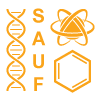Swarm Intelligence for the Betterment of Mankind

Swarm robotics is exploring how several robots could come together to solve a problem that cannot be solved by one of them alone. This is a new approach to coordinating the actions of a large number of relatively simple robots in a decentralized way. It seems to sound fantastic, but we observe this phenomenon everywhere in the wild: fish swim in schools, birds fly in flocks, bees and ants swarm… Their movements are coordinated with millimetre precision, life focuses on the attainment of a common goal.
The Robatz Network project has evolved from the student laboratory of the Faculty of Radiophysics of the Belarusian State University. In 2018, the laboratory received the support of the Science Around Us Foundation, giving them a chance for a long-term and in-depth study of certain issues and problems in the field of group robotics. Robatz Network is now an IoT platform that allows low-level robotic devices to interact with each other and organize group interaction and decision-making.
The project focuses on swarm robotics, algorithms of swarm reconnaissance, mathematical modeling of swarm behavior, distributed sensing, machine learning, wireless communications, and hardware development based on swarm behavior of insects: ants, bees, termites, fireflies…
To date, the Robatz Network team has successfully reproduced the algorithm used by fireflies to spread light in the meadow, leading to the entire meadow synchronizing and starting to glow. The algorithm was used to create a game demo stand. Small devices with diodes were mounted on the canvas stretching wall to wall and connected in one system. One element lighted up at the very beginning of the game, and if you failed to shoot it with a light gun promptly, the nearby devices would start activating according to the domino effect. This simple game was used to demonstrate a chain reaction involving the same algorithm that fireflies use.
The Robatz Network team dedicate most of their time to the scientific component, while implementation is too early to talk about. However, it is highly possible for such a concept to become the standard in almost all areas of human life in the near future: in medicine, organization and management of urban infrastructure, traffic flows, etc.
Links:


